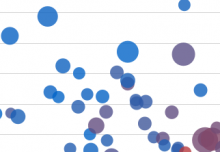So, you’ve just implemented a big data solution across the enterprise. You know have access to an unprecedented amount of data. Now what? Below are three steps to take, whether you’ve just implemented big data or are about to.
- Identify big data use cases

First, you’ll need to identify what it is that you want to achieve with your big data. For example, do you want to use it to learn more about your customers? Figure out the most cost-efficient manner to purchase raw materials? Analyze consumer buying habits? Get a better understanding of employee turnover? By identifying use cases, you’ll be less overwhelmed and better able to focus. Your use cases will determine which data sources to use, key performance indicators and more. Try to identify several use cases for each department, ideally with department managers’ input.
- Gather data sources

Next, gather your data sources based on the various use cases you’ve decided to use. These data sources may be internal or external, depending on your needs. For example, if you’re analyzing employee turnover, you’ll likely use internal data to measure your own numbers along with external data for comparison purposes.
- Improve data quality

Now that you have use cases and corresponding data, you’ll want to ensure that the quality of that data is exceptional. Your data needs to be free of errors and inconsistencies. It needs to be accurate and genuine. It should be standardized as well. For example, if your data consists of customer names and addresses, data quality tools are available that can standardize addresses according to USPS standards as well as correct misspelled words. Depending on the database management tools you use, you may be able to create data rules that define the values and relationships that can be created. For example, for internal human resources data, you might want HR clerks to enter a gender of either M or F whenever a new record is created. This data rule can ensure consistency so that you only have M or F, not a mixture of M, m, male, man, F, f, female, or woman.
Congratulations, you have access to data! Now put it to use and improve its quality.
Sources
- Datafloq, ” What Do I Do With All This Data?,” – https://datafloq.com/read/what-do-i-do-with-all-this-data/857
- Dell Tech Page One, “How Companies Can Make the Most of Big Data,” – http://techpageone.dell.com/business/companies-can-make-big-data/
- Oracle, “10 Understanding Data Quality Management,” – http://docs.oracle.com/cd/B31080_01/doc/owb.102/b28223/concept_data_quality.htm


